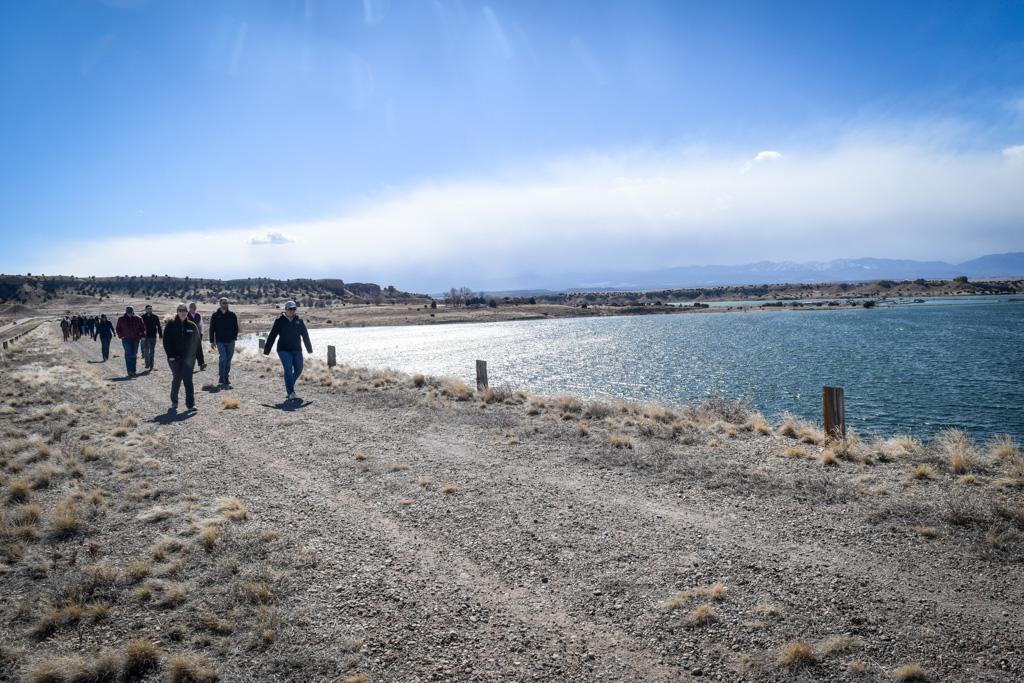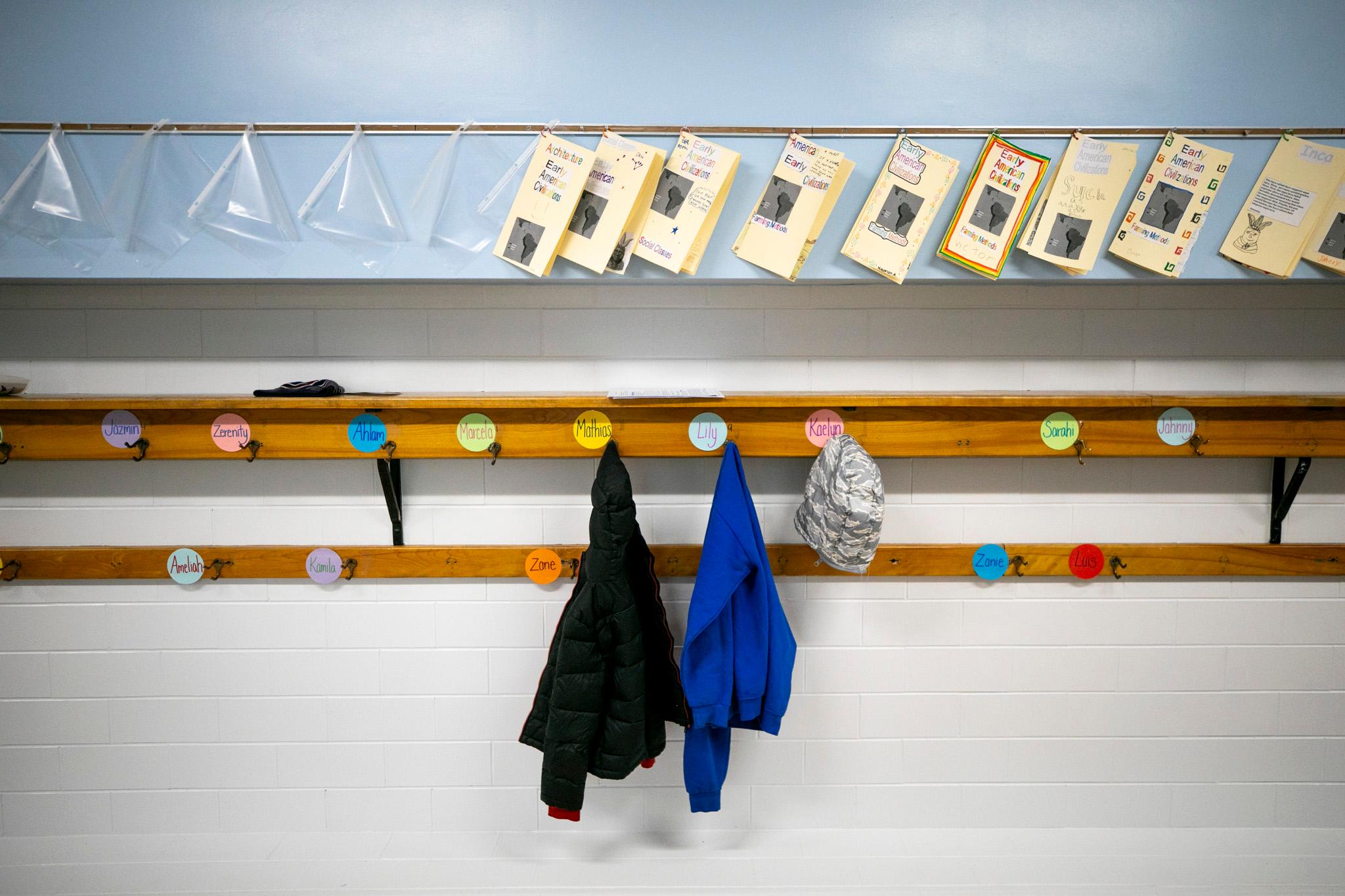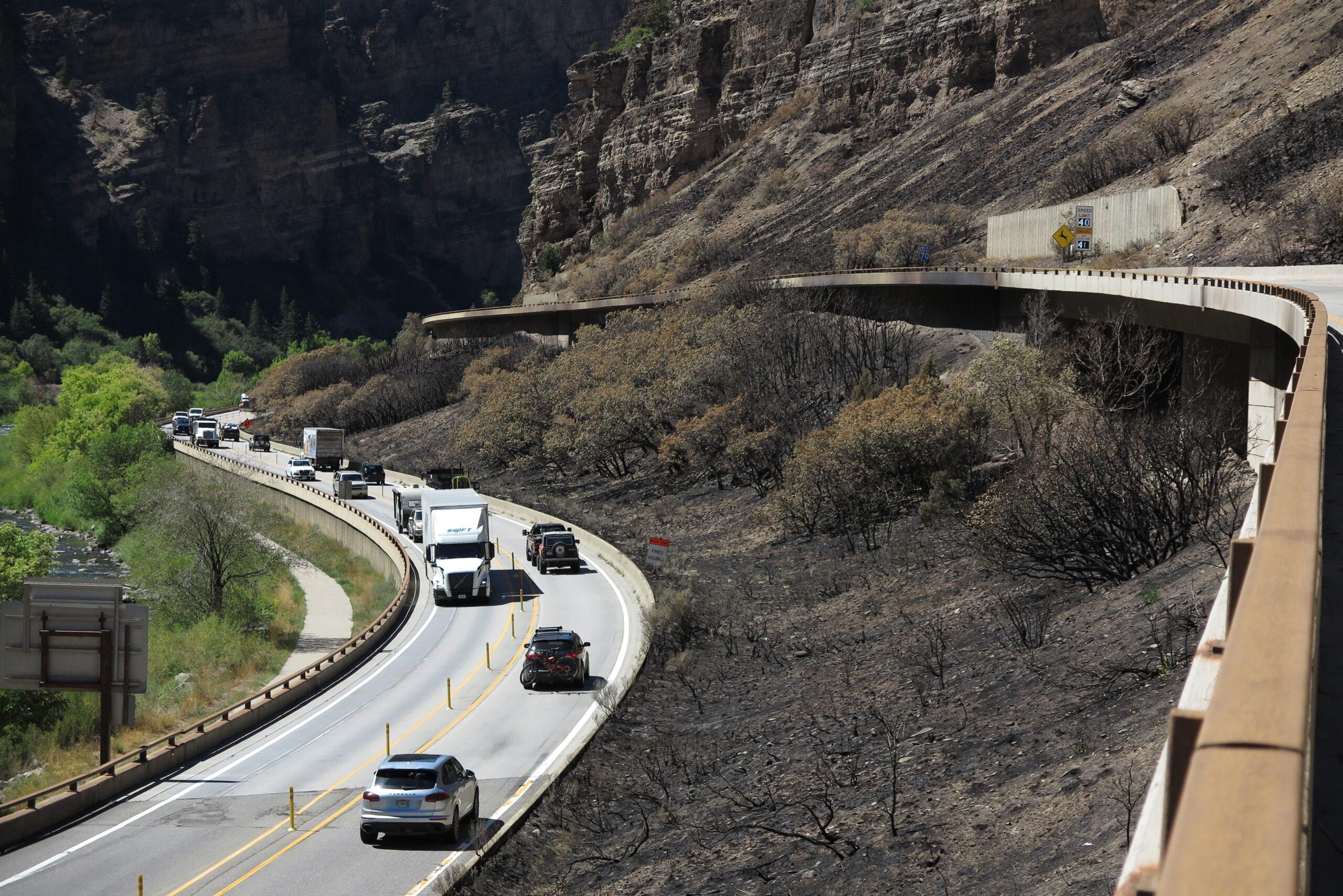
Glenwood Springs restaurant Masala and Curry was having its best summer ever. Front Range residents eager for a COVID-19 summer staycation were flooding the Western Slope along the critical transportation artery that is Interstate 70. And many stopped in to fuel up on Indian cuisine.
That was before Aug. 10. Everything changed that day.
The Grizzly Creek fire rapidly exploded, closing the interstate east of town and sending the blaze to the top of the nation’s wildfire priority list. Masala and Curry owner Steve Nieslanik said his business dropped by two-thirds.
With state and federal agencies now assessing the long-term damage left from the fire’s rampage through the steep and twisting Glenwood Canyon, the incident provides a stark example of the risk climate change can pose to major national transportation corridors and the communities that depend on them.
“While it’s a terrible situation to go through, it is in no way surprising,” said Paul Chinowsky, director of the Environmental Design Program at the University of Colorado Boulder. Chinowsky, one of the authors of the transportation chapter of the most recent National Climate Assessment, said the same elements that make drives like the one through Glenwood Canyon so beautiful also make them heavily dependent on a stable climate.
The newly scorched soil of the canyon, now denuded of stabilizing vegetation, will be far more prone to landslides and flash floods for years. Meanwhile, Chinowsky said Western Colorado will be at higher risk for the severe rain events which cause these catastrophes as the climate continues to warm.
Coming back from the disaster
A so-called Burned Area Emergency Response team from the White River National Forest has started assessing what measures may be feasible in the canyon to lower the ongoing risk, including the potential for revegetation.
Colorado Sen. Michael Bennet recently toured Glenwood Canyon, along with a large group of other federal, state and local leaders. As Bennet looked at the blackened cliffs around him, he tried to frame the challenge as a national opportunity. The Democrat called for more putting more resources into mitigation efforts to prevent major wildfires from breaking out and to make them easier to fight when they do occur.
“If we do that, I think we’re going to create really good jobs across the Rocky Mountain West, especially in rural areas,” Bennet said.
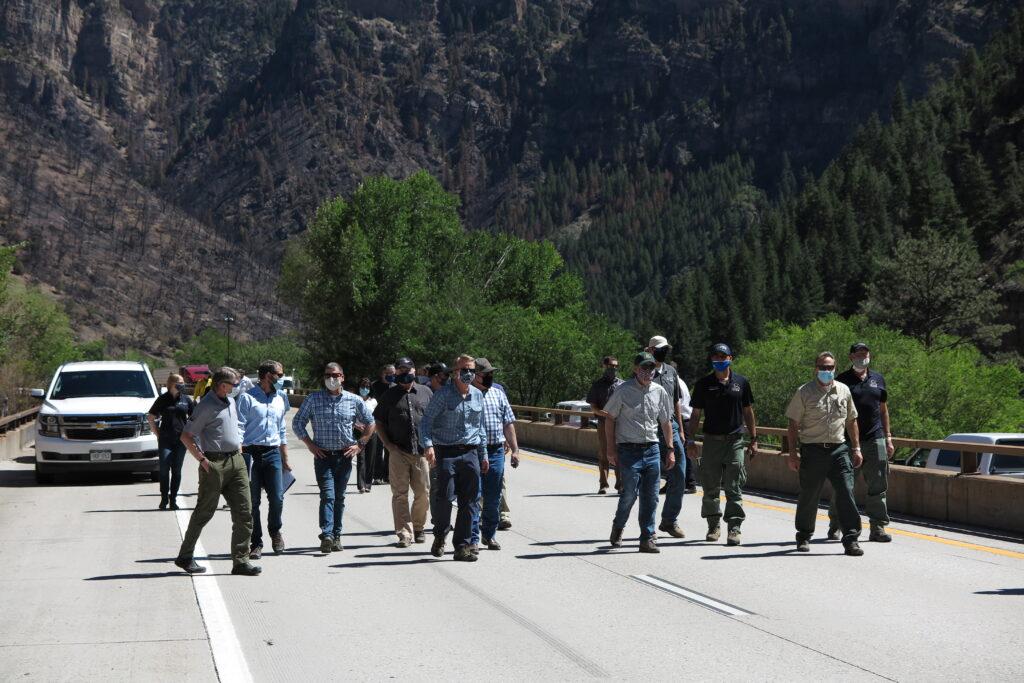
However, when it comes to making the nation’s transportation sector more resilient, the American Society of Civil Engineers estimates there is already a $1.2 trillion gap in funding for transportation infrastructure. That’s before climate impacts are taken into account.
On a local level, the two-week-long highway closure wreaked havoc on the Glenwood Springs economy during a peak tourism season already wounded by the pandemic. Mayor Jonathan Godes estimates the local economic loss at tens of millions of dollars.
Godes said his community has long been accustomed to waiting out occasional closures of the Interstate. The canyon is so narrow that in many places, it can’t even accommodate the width of all four traffic lanes. The design instead uses a massive “bridge deck” built onto the canyon wall to stack long stretches of westbound traffic above the east-bound lanes.
A bad car accident might close the canyon for a couple of hours. With a large rockslide, it can stretch to a couple of days. Anything beyond that and essential services start to deteriorate.
“When that happens, in typical times, the grocery stores get empty,” Godes said.
Cut off communities and longer hauls
I-70 isn’t the only Colorado highway impacted by natural disasters in the last decade. US-24 west of Colorado Springs is still prone to closures, eight years after the Waldo Canyon fire there. In 2013, historic flooding washed out many highways into the mountains along the northern Front Range. And in the spring of 2019, an unprecedented series of avalanches cut off routes across the mountains, while a bomb cyclone stranded some Front Range motorists for hours.
At this point, scientists are comfortable saying the warming climate is exacerbating these sorts of weather events.
Three-quarters of Colorado communities rely solely on the trucking industry for resources ranging everywhere from produce to gasoline, according to the Colorado Motor Carriers Association.
Association president Gregory Fulton said I-70 is by far the state’s most practical route across the Rocky Mountains. When it’s closed, drivers reroute over much more difficult passes with few passing lanes and parking options for large vehicles. All of those complications cost hours and money for trucking companies and interrupt precisely timed supply chains for everyone else — including people well beyond Colorado’s borders.
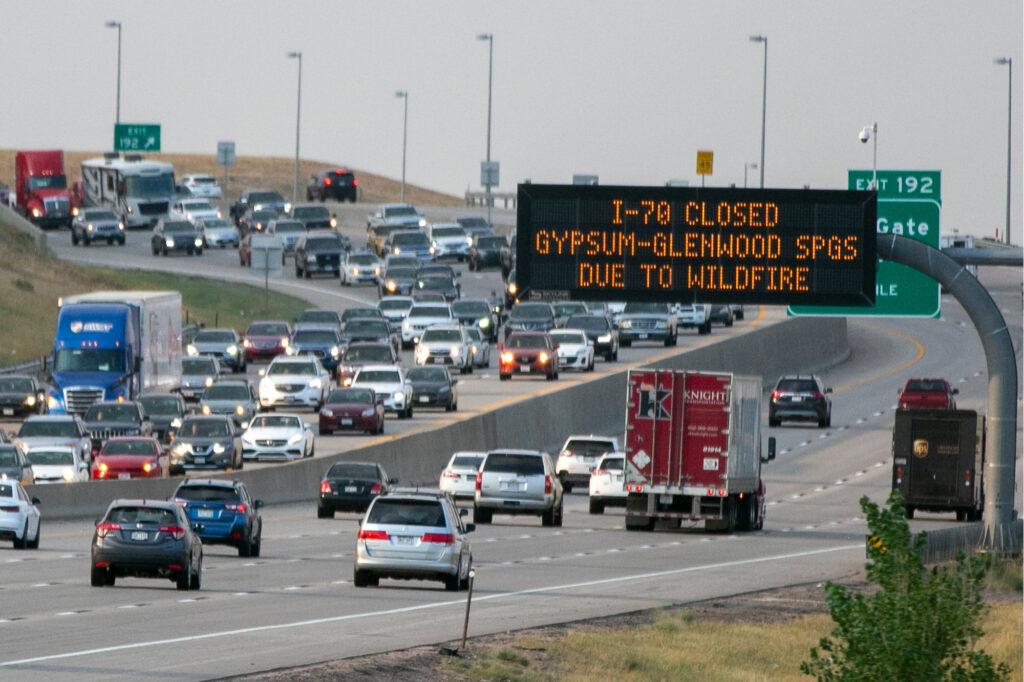
“We tend to forget the importance of this corridor as a national one,” Fulton said. “It isn’t just us that get affected. It is clearly businesses and consumers throughout the country that get affected when there’s any significant closure of this highway.”
When they can’t use I-70 as an option, truckers on national routes often bypass the state of Colorado entirely — heading instead up to Interstate 80 in Wyoming or south to Interstate 40 in New Mexico.
That’s a work-around that is likely to be ever more common in the coming years, as state and federal agencies do the painstaking work of managing the damage the Grizzly Creek fire managed to wreak in just days.

